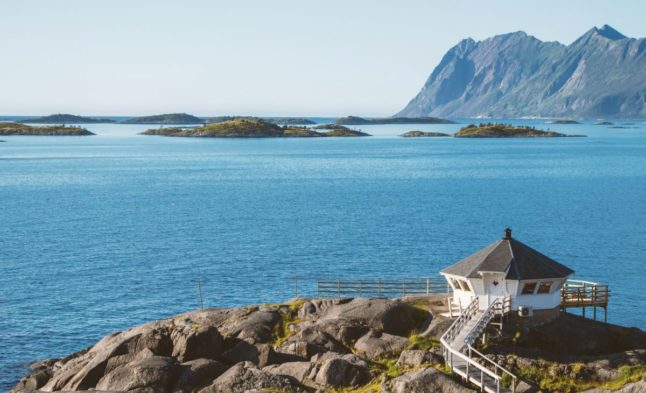June in Norway was marked by warm and sunny weather across most of the country. The average monthly temperature was 2.6 degrees Celsius higher than normal, with the mercury rising as high as 30C at various stages.
Fast forward to now, and the country has seen more mild temperatures around the 20C mark interrupted by frequent heavy rain. During July, the Norwegian Meteorological Institute issued several warnings for rain and thunderstorms.
The heatwave affecting large parts of Europe has not made its way to Norway due to a jet stream that is currently blocking the heatwave from reaching Scandinavia.
The jet stream, which is formed when cool air masses meet warm air masses, is pushing the low-pressure weather towards Scandinavia while at the same time pushing the high-pressure band towards southern Europe.
The rain is expected to continue, and large parts of Norway, such as Kristiansand, Bergen, Oslo, and Trondheim, can expect more rainfall over the weekend.
Northern Norway will get some reprieve from the rain, but the temperatures will still be around 17-20C at the warmest.
“The vast majority will experience quite changeable weather. The areas north of Bodø will have a rather nice weekend, with periods of sun. The temperatures won’t be particularly high, but northern Norway gets the most rest after a slightly wet period recently,” Eldbjørg Moxnes at the Meteorological Institute told Norwegian newswire NTB.
She added that the low pressure preventing the heatwave from reaching Norway would continue for at least a week.
“The low pressure will probably continue next week. Things indicate that for Norway, we may have to wait until August before we see the high summer temperatures again,” she said.
More extreme weather in the form of long hot spells, such as in June or more heavy rain showers, is one of the ways Norway is being affected by climate change.
Climate change is leading to longer periods of drought and then a heavy period of rainfall. This is why climate scientists will often say it is getting drier and warmer at the same time as the weather becomes more extreme.
“The biggest climate change in Norway is more extreme weather events,” Bjorn Samset, a senior researcher at the Cicero Center for Climate Research, told Norwegian newspaper VG.
Figures from the Meteorological Institute and reported by VG show that Norway has become 1.9C since the 1960s, with the country also seeing an average of 145mm more rain than compared to the 1960s.
Moving ahead, Samset warns that this will lead to more extreme heatwaves and weather in the future.
“We will have summers that are so hot and dry that we have not seen the like,” he said.
While rainfall is up across the country on average, most of the areas to see more rain in Norway are in western Norway – an area already famous for wet weather.
“If you look at a ten per cent increase in precipitation, the amount of water will be brutally greater in Western Norway than in Eastern Norway because of the starting point,” climate researcher Hans Olav Hygen said.
He added that current forecasting expects little to no increase in rain in eastern Norway as it gets hotter and hotter.
“When we look forward to the end of the century, we see an increase in precipitation in all seasons in Western Norway, while there is little or no increase in Eastern Norway. There is a greater risk of drought,” he said.
Periods of drought and warmer weather increase the risk of forest fires and crop failure, while wetter weather in the form of more extreme periods of rain means a greater risk of flooding.



 Please whitelist us to continue reading.
Please whitelist us to continue reading.
Member comments